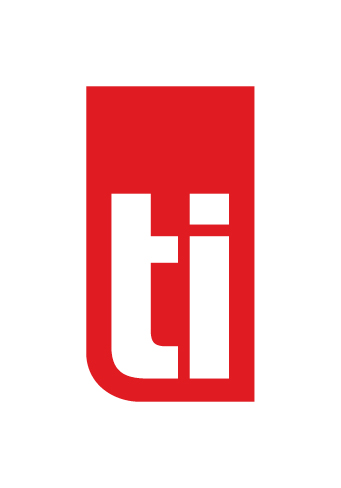As fuel volumes decline and competition intensifies, South Africa’s forecourt retailers are shifting their focus beyond the pump toward food, convenience, and partnerships that drive loyalty and spending.
Trade Intelligence’s latest Forecourt Retail Report sheds light on a channel under pressure, yet actively adapting. Forecourts are evolving into dynamic convenience hubs, embracing partnerships and diversified services to preserve margins and unlock new growth. The fuel that once defined the forecourt is no longer enough to sustain it.
Beyond the Pump: The Fight for Footfall

While fuel volumes have declined by 6.3% over the past year, the number of South African forecourts has grown by +12% over five years. This increased competition, coupled with the increasing dependency on alternate revenues (due to declining fuel sales), creates an environment where the battle for shopper footfall has become the defining challenge – and opportunity – for fuel retailers.
To attract shoppers, forecourt operators are investing in three key levers:
- Retail partnerships with supermarket brands
- Loyalty programmes, often linked to financial or retail partners
- Value-added services, from fast-food outlets to parcel lockers and app-based deliveries

1. Retailer Partnerships: Footfall Through Familiarity
Retailer partnerships are now a hallmark of the forecourt experience. From Woolworths Foodstops at Engen to Pick n Pay Express at bp and FreshStop at Astron Energy, 849 forecourts now host supermarket-branded stores, a +26% increase over five years.
Trade Intelligence research shows that forecourt shoppers have a clear preference for supermarket-branded stores over fuel-branded ones, seeking the familiarity and quality offered by established retail brands.
2. Loyalty Programmes: Driving Traffic Through Rewards
Fuel providers are increasingly tapping into the power of loyalty
programmes. Most major players, Shell, Sasol, Astron Energy, TotalEnergies and bpSA, run their own rewards programmes. At the same time, they are integrating with established retailer and financial institution loyalty ecosystems.
Examples include earning Clicks ClubCard points when filling up at Engen, or fuel cashback via Discovery at bp and Shell. The impact is measurable: the Standard Bank UCount partnership with Astron/Caltex, which offers up to R10 per litre cashback, resulted in an +83% increase in customer traffic to Astron Energy versus competitors.
“This demonstrates how well-executed loyalty initiatives can influence forecourt choice,” says Andrea Slabber, insights lead at Trade Intelligence. “These collaborations are strategic levers to attract footfall by tapping into an existing loyalty base to draw that spend onto their site.”

3. A Broader Offering: Fueling Convenience
From quick-service restaurants (QSRs) to mini-supermarkets and parcel collection points, forecourts are expanding their role in everyday convenience. The integration of diverse offerings is creating one-stop destinations that resonate with today’s time-pressed shoppers.
Notable examples include:
- Seattle and Vida e Caffè counters inside Astron Energy forecourts
- KFC and Pedro’s drive-throughs at Shell and bp stations
- Pargo pick-up points and Pudo lockers for parcel collection
- bpSA’s planned rollout of 40 new sites featuring services like licence disk renewals and battery rentals
These offerings tap into convenience shoppers’ needs, deepening relevance and increasing footfall beyond the fuel tank.
Convenience Sales Rise as Fuel Margins Are Squeezed
The numbers tell a compelling story. While fuel sales still account for most forecourt revenue in SA, they fell by 4.2% in 2024. Convenience store sales, meanwhile, increased by +4.0%.
In the US, although non-fuel categories contribute only 30–40% of forecourt sales, they deliver 60% of gross profit – emphasising the growing importance of non-fuel revenues.
The South African consumer’s relationship with forecourts is shifting from a pure fuel stop to a desire for convenient, on-the-go solutions. A remarkable 75% of forecourt shoppers surveyed by Trade Intelligence in June 2025 said that they intend to maintain or increase their visits, highlighting the rising relevance of forecourt convenience. The message is clear: the shop matters.

Speedy Shoppers

The average forecourt shopper spends just 3.5 minutes in-store. This incredibly tight window underscores the importance of strategic merchandising. Stocking the right range, clear category layout, impulse-ready positioning, and fast-moving combo offers all play a role.
Traditionally seen as more expensive, forecourt stores are starting to shift away from ‘convenience surcharges’ toward value promotions and regular deals. Combo offers on coffee and pies, daypart-based energy drink discounts, and creative cross-merchandising are all attempts to increase basket size.
Getting this right requires tight collaboration between suppliers and retailers – at both national and store level – to ensure the right range, price points, and promotions are in place to meet shopper expectations.
Small Format, Big Potential
South Africa’s forecourt retail sector is at an exciting juncture. With the right combination of retail partnerships, shopper insight, and execution focus, forecourts are well-positioned to evolve into full-fledged convenience hubs – designed to meet today’s shopper expectations and to unlock tomorrow’s growth.
Trade Intelligence’s Forecourt Retail Report offers detailed sizing, trends, shopper insights, and strategic implications for FMCG suppliers and retailers navigating this evolving space.
The Bigger Picture
What’s playing out in forecourt retail reflects broader themes in the South African retail landscape. Channels are overlapping, shopper expectations are rising, and format strategy is more important than ever. Knowing where to play – and how to win – is becoming a commercial imperative. To unpack this imperative in the context of broader channel strategy, read this article.


